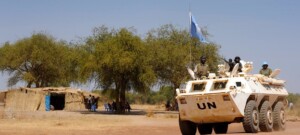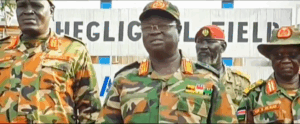Sudan OCHA bulletin 27: Food insecurity will prevail in Sudan’s war-affected areas
According to the Famine Early Warning Systems Network (FEWS NET) June report, food security in Sudan will deteriorate for poor families during the peak of the lean season from July to September.
Families will find themselves increasingly dependent on markets for food as household food stocks deplete, the UN Office for the Coordination of Humanitarian Affairs (OCHA) in Sudan reports in its latest weekly bulletin.
According to the Famine Early Warning Systems Network (FEWS NET) June report, food security in Sudan will deteriorate for poor families during the peak of the lean season from July to September.
Families will find themselves increasingly dependent on markets for food as household food stocks deplete, the UN Office for the Coordination of Humanitarian Affairs (OCHA) in Sudan reports in its latest weekly bulletin.
In the conflict-affected regions of Darfur, South Kordofan and Blue Nile, crisis levels of food insecurity will prevail, as farmers are unable to access land for cultivation, FEWS NET predicts.
The recorded rainfall in early to mid-June was 10 to 25 percent below average in western Sudan and across the sorghum cultivation areas in central and eastern Sudan. The lower than average rainfall has led to a decrease in pasture and water availability for livestock.
Land preparation is underway in most areas of the country, and farmers are expected to begin planting early July, the bulletin reads.
Influx of South Sudanese refugees increases
According to the UN Refugee Agency (UNHCR), more than 38,000 South Sudanese refugees arrived in Sudan during the month of June, marking the largest monthly arrival rate to Sudan since fighting broke out in December 2013.
Refugees are arriving in White Nile, South Kordofan, West Kordofan, and Khartoum states. The total number of South Sudanese arrivals in Sudan now stands at 187,747. About 101,000 of them have received some form of humanitarian assistance.
Extension of three refugee sites in White Nile state (El Alagaya, El Redis II, and El Kashafa) is underway with demarcation of the additional space in progress, OCHA reports. Emergency tents have already been erected to cope with the refugee influx, as shelter materials are delivered. In preparation for the rainy season, a three-month supply of Super Cereals (142 MT) was pre-positioned in the five sites of El Kashafa, El Redis I, El Redis II, Jouri, and Um Sangor.
Monthly food distributions will continue in El Alagaya and Dabat Bosin sites, as they remain accessible. In Jouri site, the Sudanese Ministry of Health (SMoH) and the World Health Organization (WHO) constructed three communal shelters, a laboratory and a pharmacy. In Um Sangor, the Sudanese Red Crescent Society (SRCS) constructed a health clinic comprising of a screening room, a nutrition room, a laboratory and a pharmacy. The clinic is staffed with a doctor, a medical assistant, two nurses, two midwives and a lab technician. However, there is no ambulance available in the camp and referrals are transported by car.
Refugee returnees in Blue Nile state in need of assistance
According to the Sudanese Commission of Refugees (COR) in El Damazin, between January 2013 and May 2015 an estimated 37,900 Sudanese refugees have returned from South Sudan and Ethiopia. They are in need of humanitarian assistance.
Local authorities provided the returnees with initial food assistance and plan to settle them in safe areas. The governor of Blue Nile state submitted a request to aid organisations for their support in providing these people with humanitarian assistance. In turn, UN humanitarian agencies have asked for permission to visit the relevant locations to carry our assessments and determine the precise needs.
4,000 vulnerable people in North Darfur receive livelihood assistance
According to the results of 2014 Post-Harvest Assessment (PHA), an estimated 2,270 MT of different kind of seeds are required for the 2015 summer agricultural season.
The North Darfur Ministry of Agriculture (SMoA), with the support of the Darfur Regional Authority (DRA), will distribute 615 MT of seeds for the summer season compared with the 400 MT distributed last year. Owing to funding constraints, the Food and Agriculture Organization (FAO) will only be able to contribute 12 MT compared to the 400 MT provided last year.
Oxfam America supported 800 vulnerable families (about 4,000 people) with agricultural supplies including seeds and tools. The vulnerable families were selected based on their ability to access cultivation lands.
Furthermore, Oxfam America supported 1,000 resident families in the rural areas near El Fasher, capital of North Darfur, with similar agricultural inputs. INGO ZOA, through a voucher system, is also distributing seeds in Dar El Salam and Kalamindo localities targeting 1,000 families in seven villages.
Read the full bulletin here











 and then
and then